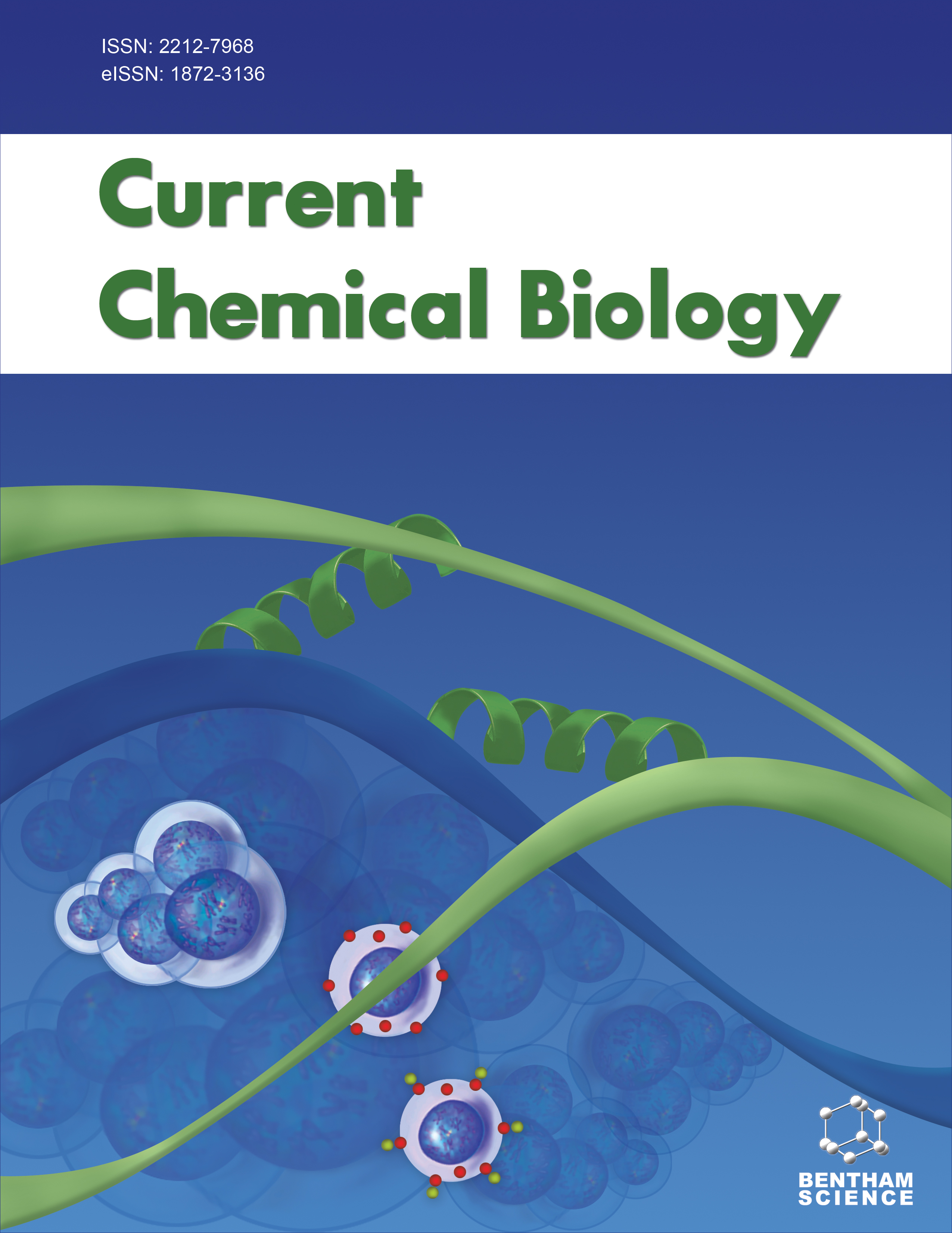- Home
- A-Z Publications
- Current Chemical Biology
- Previous Issues
- Volume 3, Issue 2, 2009
Current Chemical Biology - Volume 3, Issue 2, 2009
Volume 3, Issue 2, 2009
-
-
The Anterior Gradient-2 Pathway as a Model for Developing Peptide-Aptamer Anti-Cancer Drug Leads that Stimulate p53 Function
More LessOncogenic inhibition of the p53 tumour suppressor is a key feature of human cancer. However, relatively few oncogenic drug targets which inhibit p53 have been identified using a variety of model systems. As a prototype, a clinical proteomics screen was initiated in preneoplastic disease where selection pressures were placed on p53 gene mutation to identify clinically relevant and novel p53 inhibitors. This screen identified a pro Read More
-
-
-
S100A1: Structure, Function, and Therapeutic Potential
More LessAuthors: Nathan T. Wright, Brian R. Cannon, Danna B. Zimmer and David J. WeberS100A1 is a member of the S100 family of calcium-binding proteins. As with most S100 proteins, S100A1 undergoes a large conformational change upon binding calcium as necessary to interact with numerous protein targets. Targets of S100A1 include proteins involved in calcium signaling (ryanodine receptors 1 & 2, Serca2a, phopholamban), neurotransmitter release (synapsins I & II), cytoskeletal and filament associated p Read More
-
-
-
Protein-Protein Interactions: Recent Progress in the Development of Selective PDZ Inhibitors
More LessAuthors: Sylvie Ducki and Elizabeth BennettProtein-protein interactions (PPI) play an important role in cellular signalling, the most common of which is the PDZ domain. This 90-residue domain occurs 257 times in 142 human proteins. Although these domains have well-defined binding sites which recognises short C-terminal peptide ligands (PLs), the high specificity of PDZ binding makes them an intriguing system to study. Abnormal PPI are of particular importance as they of Read More
-
-
-
Structure and Inhibitor Binding Mechanisms of 11β -Hydroxysteroid Dehydrogenase Type 1
More LessAuthors: Zhulun Wang and Minghan Wang11β-Hydroxysteroid dehydrogenase (11β-HSD1) is involved in glucocorticoid activation in a tissue-specific manner. In tissues and intact cells, it functions primarily as a reductase by converting inactive cortisone to cortisol. Since glucocorticoid action is implicated in the development of the metabolic syndrome, inhibition of 11β-HSD1 has been proposed as a therapeutic strategy to treat type 2 diabetes. 11β-HSD1 is a memb Read More
-
-
-
Solid-Supported Peptide Arrays in the Investigation of Protein-Protein and Protein-Nucleic Acid Interactions
More LessAuthors: Ole Brandt, Ursula Dietrich and Joachim KochThe elucidation of the manner in which proteins interact with other proteins or nucleic acids can lead to new drug and therapeutic leads in biological systems like signal transduction, protein targeting, and cell cycle control. Moreover, it aids in the design of experiments like mutagenesis and competition for binding sites and computer models to shed light on multi-protein interaction networks. Protein arrays are instrumen Read More
-
-
-
The Role of Fatty Acids in the Activity of the Uncoupling Proteins
More LessAuthors: Maria d. M. Gonzalez-Barroso and Eduardo RialThe uncoupling proteins (UCPs) are mitochondrial transporters that, according to their family name, should lower the efficiency of the oxidative phosphorylation. The uncoupling protein from brown adipose tissue UCP1 is the best characterized member of the family. It is a proton carrier, activated by low fatty acid concentrations, that has a thermogenic function. The physiological role of the uncoupling protein UCP2 is pro Read More
-
-
-
Chemical and Biochemical Basis of Cell-Bone Matrix Interaction in Health and Disease
More LessBy Xu FengBone, a calcified tissue composed of 60% inorganic component (hydroxyapatite), 10% water and 30% organic component (proteins), has three functions: providing mechanical support for locomotion, protecting vital organs, and regulating mineral homeostasis. A lifelong execution of these functions depends on a healthy skeleton, which is maintained by constant bone remodeling in which old bone is removed by the bone-re Read More
-
-
-
Role of Vitamin E in Cellular Antioxidant Defense
More LessProtection against free radical-initiated oxidative damage has long been recognized as the most important function of vitamin E. However, the mechanism by which vitamin E exerts its antioxidant function in vivo has yet to be delineated. Available information suggests that vitamin E may exert its antioxidant function at the tissue level by mediating the levels or generation of mitochondrial superoxide. Mitochondrion is the Read More
-
-
-
Functional Characterization of Chitin and Chitosan
More LessChitin and its deacetylated derivative chitosan are natural polymers composed of randomly distributed β-(1-4)- linked D-glucosamine (deacetylated unit) and N-acetyl-D-glucosamine (acetylated unit). Chitin is insoluble in aqueous media while chitosan is soluble in acidic conditions due to the free protonable amino groups present in the D-glucosamine units. Due to their natural origin, both chitin and chitosan can not be defined as Read More
-
-
-
An Active Compound for Fruiting Body Induction
More LessAuthors: Yumi Magae, Takeshi Nishimura and Seiji OharaMushroom development is important for both basic scientific research and for practical mushroom production. In previous screening studies of natural compounds that are effective for fruiting body development of oyster mushrooms (Pleurotus ostreatus) on agar medium, we identified a triterpenoid saponin that exerted a hormone-like effect. Not only did the saponin stimulate mushroom development, but P. ostreatus als Read More
-
Volumes & issues
Most Read This Month
Article
content/journals/ccb
Journal
10
5
false
en


